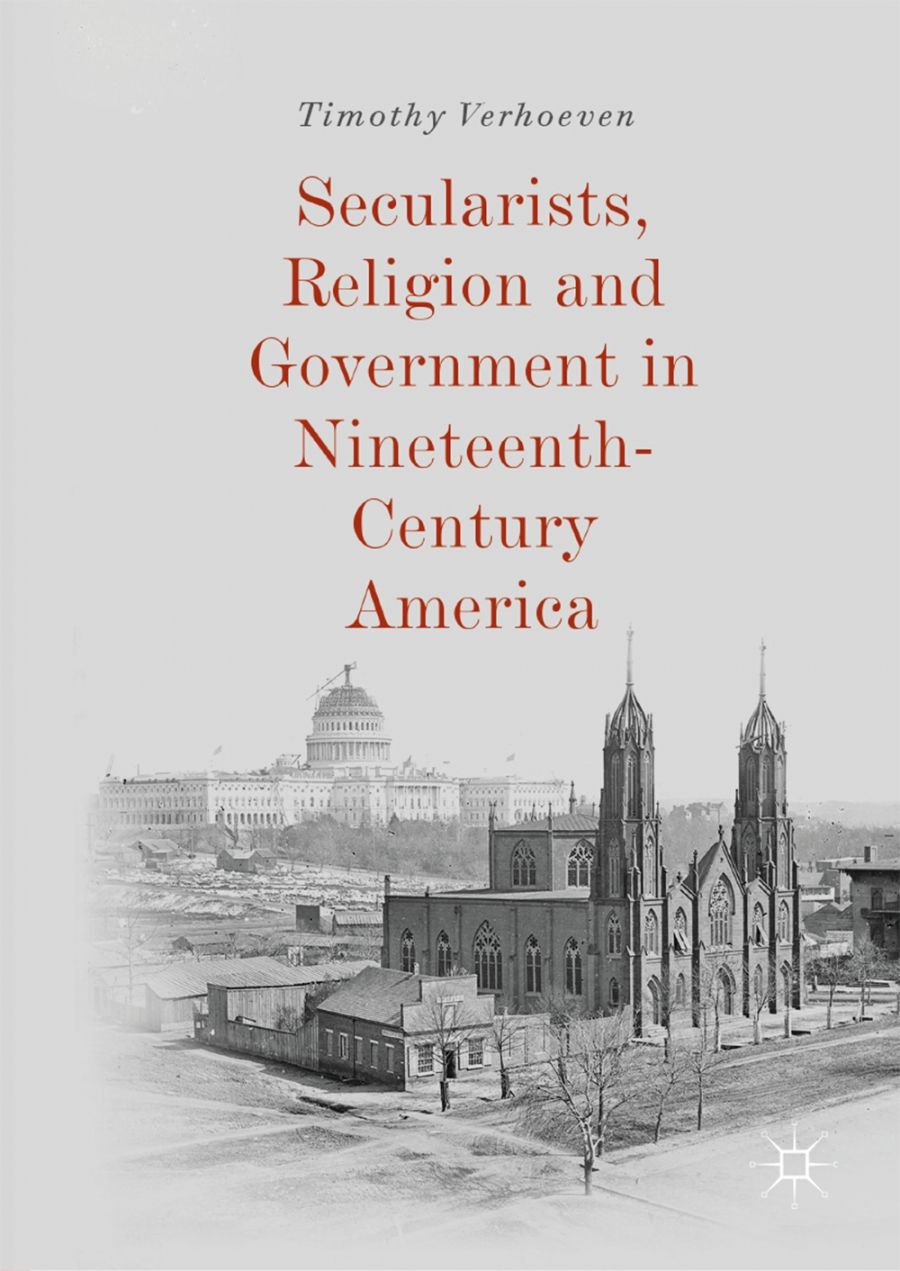
- Free Article: No
- Contents Category: History
- Review Article: Yes
- Online Only: No
- Custom Highlight Text:
In an address to the National Prayer Breakfast (8 February 2018), President Donald Trump called the United States a ‘nation of believers’. As evidence, he reminded his audience that the American currency includes the phrase ‘In God We Trust’ and that the Pledge of Allegiance is ‘under God’ ...
- Book 1 Title: Secularists, Religion and Government in Nineteenth-Century America
- Book 1 Biblio: Palgrave Macmillan, $139 hb, 295 pp, 9783030028770
Rarely has the history of American secularism received the attention it deserves, and Verhoeven’s book attempts to re-balance our knowledge. He argues that neither the advocates of Protestant religious influence nor the secularists attained cultural or political hegemony in the nineteenth-century United States, but he is especially concerned to contest the widespread intellectual preoccupation with the former impulse.
American Sabbatarians had a strong sense of exceptionalism. Devotees saw the preservation of the workand pleasure-free Sunday as the bedrock of the nation’s virtue and even a sign of its commitment to a Christian republic. But efforts to stop Sunday postage led to anti-Sabbatarian petitions of sizeable proportions in the 1820s and 1830s. The campaigns to defeat Sabbatarians intent on maintaining a Protestant religious orthodoxy were successful. Not until 1912 were the post offices completely closed on a Sunday, and then it was done to improve labour conditions, not spiritual relations. The earlier pressures for closure came in large part from religious sources, but anti-Sabbatarian opposition came partly from religious sources too, particularly Universalists and Baptists hostile to the old established churches such as Congregationalists and Presbyterians, who had only lost their special legal status in the individual states. Other objectors also claimed support for piety and free access to religion, but not the oppression they viewed as emanating from church taxes and legal privileges for particular Protestant denominations. Their arguments relied on the freedom of religion under the First Amendment to the US Constitution, and fear of a possible clerical conspiracy to unite church and state. Early-nineteenth-century anti-Sabbatarians had powerful supporters in the Democratic Party of President Andrew Jackson (1829–37). They won.
 Father Thomas Mooney conducting mass for the 69th New York State Militia encamped at Fort Corcoran, Washington, D.C., June 1, 1861. Published in The Irish American, June 22, 1861 (photograph by Mathew B. Brady/Wikimedia Commons)
Father Thomas Mooney conducting mass for the 69th New York State Militia encamped at Fort Corcoran, Washington, D.C., June 1, 1861. Published in The Irish American, June 22, 1861 (photograph by Mathew B. Brady/Wikimedia Commons)
Verhoeven goes on to show the repeated tussles over the proper place of the Almighty in the American firmament, especially the important but failed post-Civil War attempts of certain Protestant churches to have God formally recognised in the constitution. Verhoeven ends with a discussion of the inconclusive contest between opponents and supporters of Sunday opening at the Chicago’s World’s Fair in 1893. Along the way we learn about attempted religious taxes, moral reform, and the vexed question of the Bible’s place in public schools, among many interesting matters. Verhoeven does not assume the secularists were necessarily ‘progressive’ in our contemporary terms. After all, racist and pro-slavery southerners campaigned vociferously against ‘political preaching’ in the 1850s, by which they meant anti-slavery advocates among Christian ministers. It was Bible-inspired reverends and their acolytes in the North who constituted the ‘left’ in that struggle, a point that explains why the largely Progressive-oriented historians of the twentieth century concentrated on them in historiography, not the secularists.
As this point suggests, questions can be raised over the meaning of these tussles and how much they reflected a strict church-state separation. Verhoeven recognises the point, but distinctions could be made with a different emphasis. On the issue of liquor laws, it is far from clear that church-state collusion or separation was the central issue, and throughout it is important to stress that most of those who pushed for moral reforms were not asking for a church-state link. By 1826, even Lyman Beecher, a leading intellectual progenitor of antebellum moral reform of the 1820s to 1840s and a former cheerleader for the established churches, specifically championed the separation of church and state as the bedrock of morality and American Exceptionalism; the aim of his followers was to Christianise the republic as a moral entity, not to convert it into a formally Christian nation-state. The post-Civil War Orthodox Calvinist attempts to create such a formal state, with its Hegelian overtones of an organic and holistic nation, were unsuccessful, whereas the efforts to change the moral tenor of individuals collectively through laws controlling various ‘vices’ had considerably more purchase, partial success and potential alignment with secular objectives, such as an attentive, productive workforce and more harmonious and prosperous families.
Verhoeven’s energetically written book is a welcome addition and correction; it is particularly useful for illustrating the use of petitions, and for its close reading of those petitions to reconstruct the cultural mentalities of the time and fervent moral causes.


Comments powered by CComment